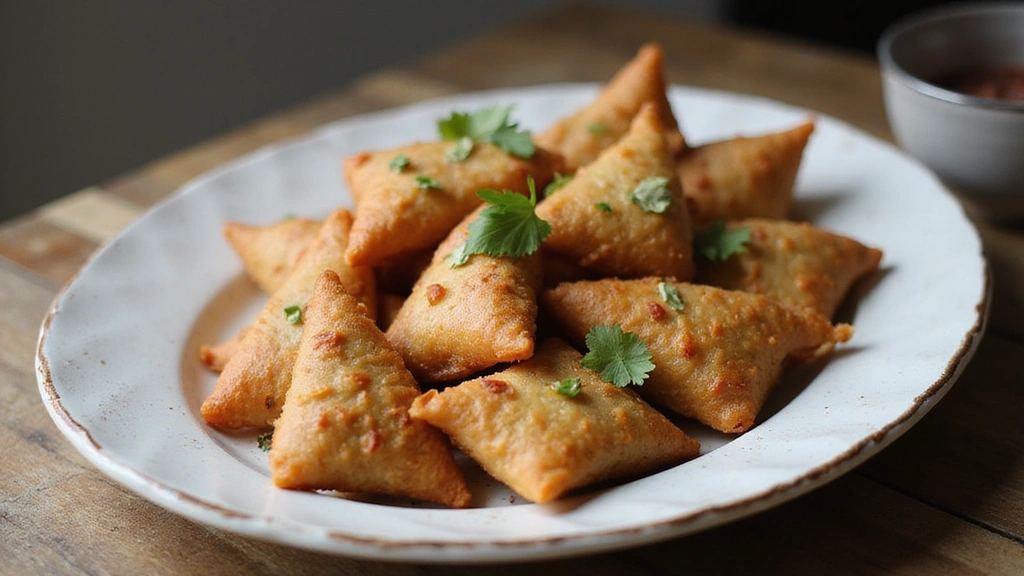This classic Crispy Ndengu Samosas brings together centuries of culinary tradition with modern techniques to create a dish that’s both comforting and elegant.
The harmonious balance of spices and crispy textures creates a memorable dining experience that will have everyone asking for your secret.
I discovered this recipe during my travels through East Africa, where local chefs have perfected it through generations of careful refinement.
Whether you’re preparing a casual family dinner or hosting a special celebration, this Crispy Ndengu Samosas delivers impressive results with straightforward preparation.
The History and Cultural Significance
• Crispy Ndengu Samosas traces its origins to East Africa, where it was originally created by Indian immigrants who settled in the region.
• The dish evolved over decades as local spices and ingredients were incorporated, eventually becoming the beloved version we know today.
• In Kenyan culture, this dish traditionally appears at weddings and family gatherings, symbolizing hospitality and celebration.
• While many variations exist across different regions, the authentic version maintains a crispy pastry shell filled with spiced mung beans that sets it apart from imitations.
Recipe Overview
Nutritional Information (per serving)
Essential Equipment Guide
Rolling Pin: A rolling pin is crucial for achieving the thin, even pastry shell needed for authentic samosas. While a wine bottle can be used as an alternative, a wooden rolling pin provides better control and consistency.
Deep Fryer: A deep fryer ensures consistent oil temperature, which is vital for achieving that perfect crispy texture. Alternatively, a heavy-bottomed pot with a thermometer can be used.
Pastry Brush: This tool helps in sealing the edges of the samosas with water or egg wash, ensuring they don’t burst during frying. Look for a brush with soft bristles for easy application.
Ingredients
For the Pastry
| Amount | Ingredient | Notes |
|---|---|---|
| 2 cups | all-purpose flour | sifted for light texture |
| 1 teaspoon | salt | enhances flavor |
| 3 tablespoons | vegetable oil | adds richness |
| 1/2 cup | water | for dough consistency |
For the Filling
| Amount | Ingredient | Notes |
|---|---|---|
| 1 cup | mung beans (ndengu) | soaked overnight |
| 1 large | onion | finely chopped |
| 2 teaspoons | ginger-garlic paste | adds depth of flavor |
| 1 teaspoon | cumin seeds | for a warm, earthy note |
| 1 teaspoon | coriander powder | enhances aroma |
| 1 teaspoon | turmeric powder | adds color |
| 1 teaspoon | garam masala | for spice complexity |
| 2 tablespoons | cilantro | chopped, for freshness |
| 1 teaspoon | salt | to taste |
| 1 tablespoon | lemon juice | for tanginess |
For Frying
| Amount | Ingredient | Notes |
|---|---|---|
| vegetable oil | enough for deep frying |
Preparation Methods
Soaking Mung Beans: Soak the mung beans overnight to soften them. This step is crucial for ensuring they cook evenly and integrate well into the filling. Make sure to rinse them thoroughly before cooking to remove any impurities.
Simmering the Filling: Cook the mung beans with spices over low heat. This technique allows the beans to absorb the flavors deeply, resulting in a rich and aromatic filling. Stir occasionally to prevent sticking.
Sealing the Pastry: Properly sealing the samosa edges is essential to prevent the filling from spilling out during frying. Use a pastry brush to lightly wet the edges with water before pressing them together.
Step-by-Step Cooking Instructions
Step 1: Prepare the Dough
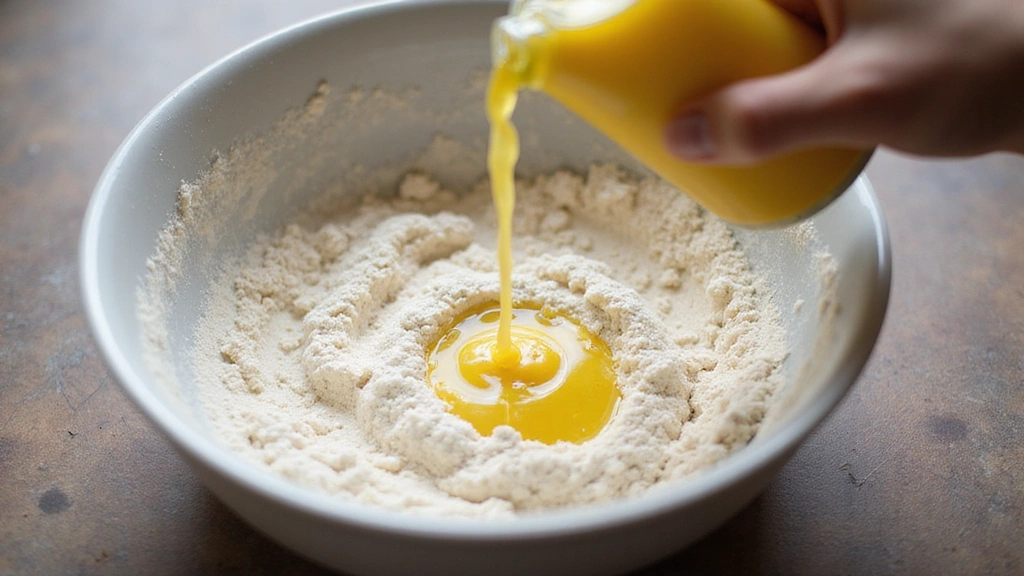
In a large bowl, combine all-purpose flour and salt.
Add vegetable oil and mix with your fingers until the mixture resembles breadcrumbs.
Gradually add water, kneading the dough until it becomes smooth and elastic.
Cover the dough with a damp cloth and let it rest for 30 minutes.
Step 2: Cook the Mung Beans

Drain the soaked mung beans and rinse them under cold water.
Heat a tablespoon of oil in a pan and add cumin seeds until they sizzle.
Add onions and ginger-garlic paste, sautéing until the onions turn golden brown.
Add mung beans and spices, cooking until the beans are tender and flavors meld.
Step 3: Make the Filling
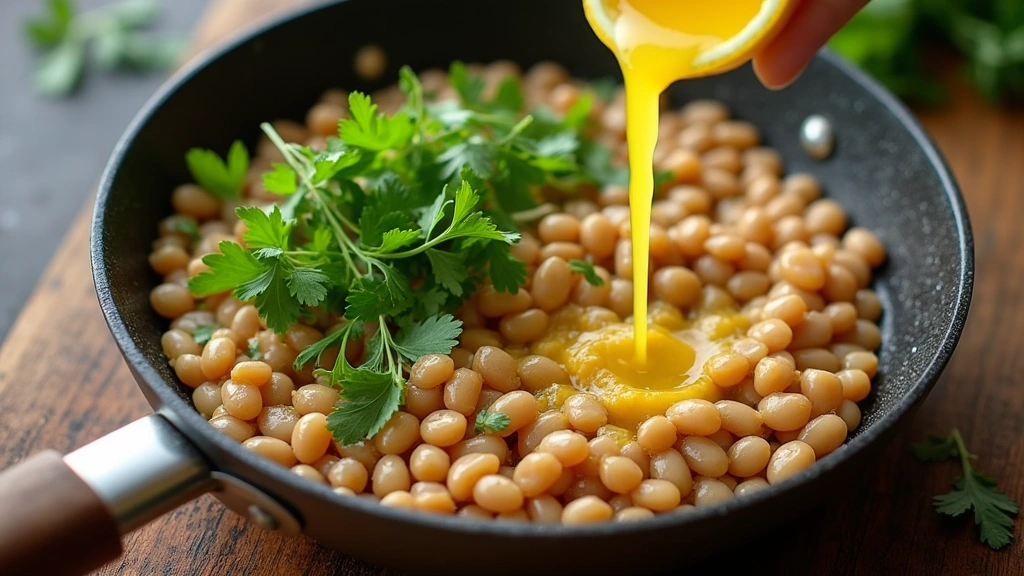
Once the mung beans are cooked, remove the pan from heat.
Stir in chopped cilantro and lemon juice for a fresh, tangy finish.
Taste and adjust seasoning if necessary, ensuring a balanced flavor.
Let the filling cool completely before proceeding to the next step.
Step 4: Roll Out the Dough
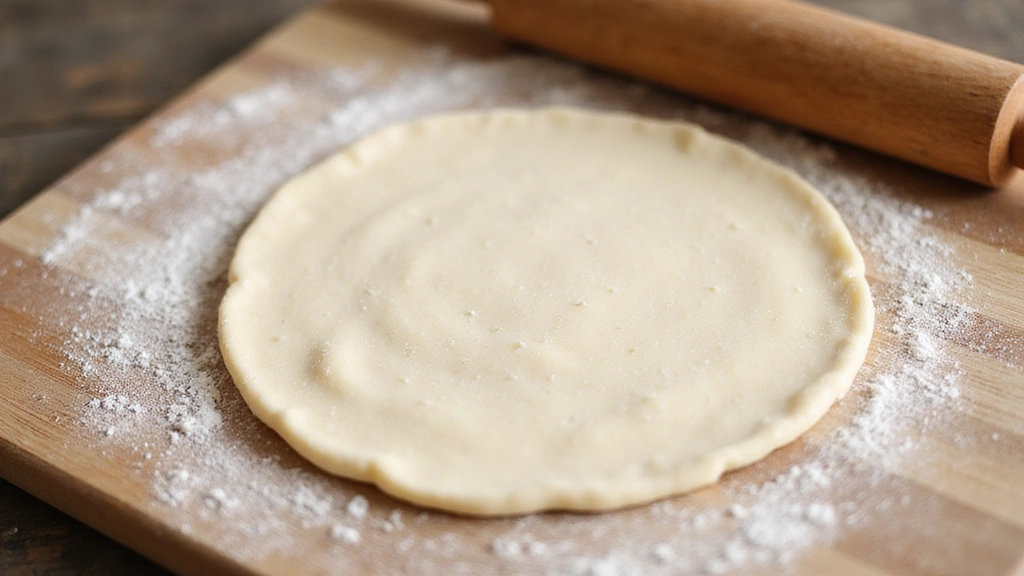
Divide the rested dough into equal portions and roll each into a ball.
Using a rolling pin, flatten each ball into a thin circle about 6 inches in diameter.
Ensure the dough is evenly rolled to prevent uneven frying.
Cover the rolled circles with a damp cloth to prevent drying out.
Step 5: Fill the Samosas
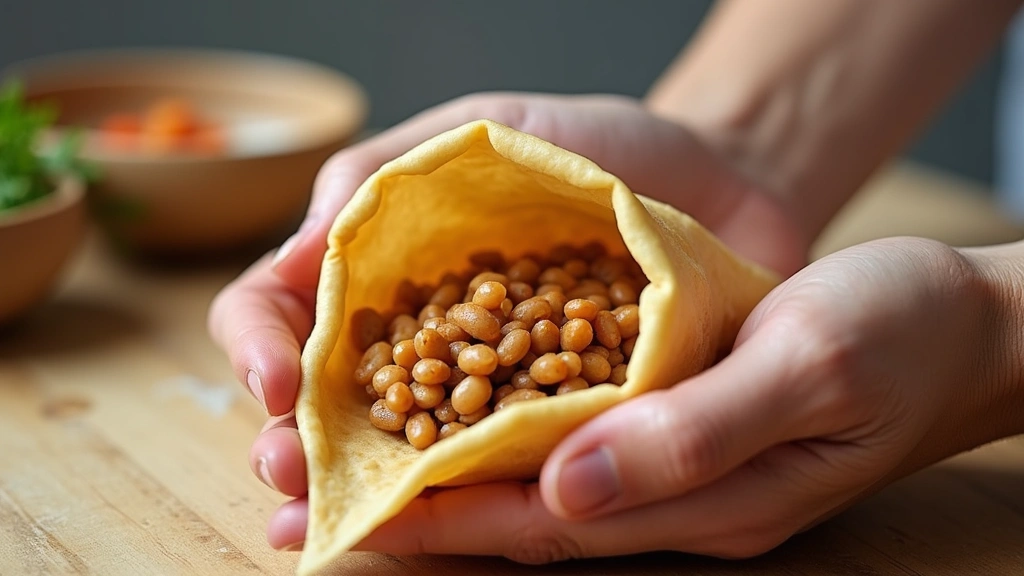
Cut each rolled circle in half to form two semicircles.
Take one semicircle and form a cone by folding and sealing the straight edge with water.
Fill the cone with a spoonful of mung bean filling, ensuring not to overfill.
Seal the open edge by pressing firmly to form a triangular samosa.
Step 6: Preheat the Oil

Pour vegetable oil into a deep fryer or heavy-bottomed pot.
Heat the oil to 350°F (175°C), using a thermometer to ensure accuracy.
Test the oil temperature by dropping a small piece of dough into it; it should sizzle and rise to the surface.
Maintain the temperature to ensure even cooking.
Step 7: Fry the Samosas

Carefully place the prepared samosas in the hot oil, avoiding overcrowding.
Fry them until golden brown and crispy, turning occasionally for even cooking.
Remove the samosas with a slotted spoon and drain on paper towels to absorb excess oil.
Ensure each batch is cooked evenly before adding more samosas.
Step 8: Serve Hot
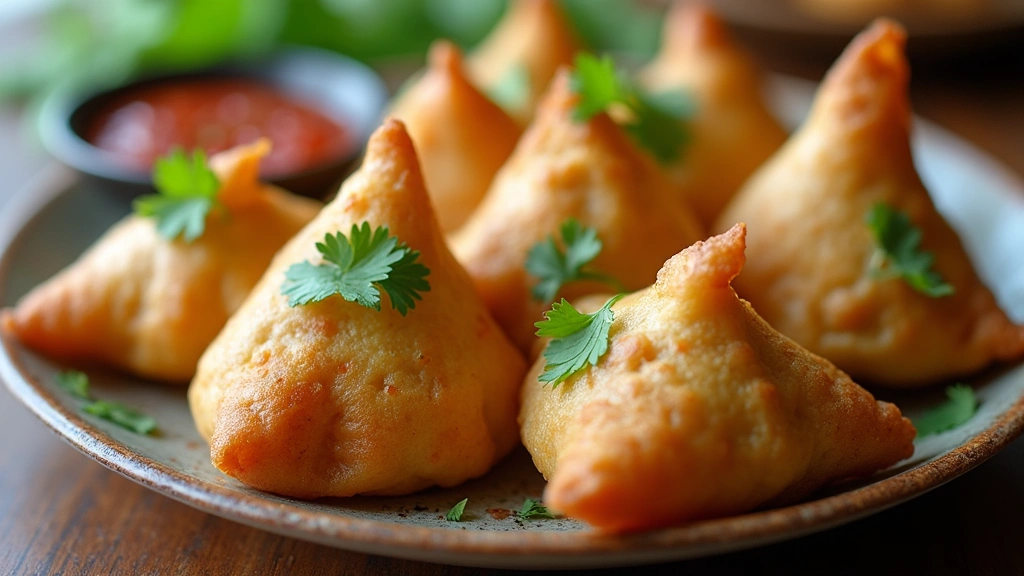
Arrange the fried samosas on a serving platter.
Garnish with fresh cilantro or mint leaves for a vibrant touch.
Serve immediately with a side of chutney or dipping sauce.
Enjoy the crispy exterior and flavorful filling with friends and family.
Critical Timing and Temperature Guide
Rolling the Dough: Roll the dough to a uniform thickness of about 1/8 inch. Ensure the dough rests for at least 30 minutes to relax the gluten, preventing shrinkage during frying.
Frying Temperature: Maintain the oil temperature at 350°F (175°C) for optimal crispiness. If the temperature drops, the samosas will absorb more oil and become greasy.
Frying Time: Fry each samosa for approximately 4-5 minutes, turning occasionally. Look for an even golden brown color as an indicator of doneness, avoiding undercooked or pale spots.
Pro Tips for Crispy Ndengu Samosas
• Ingredient Selection: Use fresh, high-quality spices for the filling to ensure a vibrant and aromatic flavor profile.
• Preparation Secret: Allow the filling to cool completely before assembling the samosas to prevent the pastry from becoming soggy.
• Temperature Management: Keep the dough and filling at room temperature before assembly to prevent condensation.
• Texture Enhancement: Deep fry the samosas twice for an extra crispy texture; fry them until light golden, then again until deep golden brown.
• Flavor Layering: Toast cumin seeds and spices before adding them to the filling to unlock their full flavor potential.
• Make-Ahead Strategies: Prepare the dough and filling a day in advance, storing them separately in the refrigerator.
• Restaurant-Quality Finishing Touches: Lightly brush the samosas with ghee before serving for an added layer of richness.
• Equipment Optimization: Use a kitchen thermometer to maintain consistent frying temperatures, ensuring professional results.
Troubleshooting Common Issues
• Pastry Too Thick: If the samosa pastry is too thick, it won’t crisp up properly. Ensure you roll the dough evenly to 1/8 inch thickness.
• Filling Too Dry: If the filling is dry, add a tablespoon of water or stock while simmering the mung beans to enhance moisture.
• Samosas Burst During Frying: This can happen if the samosas are overfilled or not properly sealed. Use less filling and ensure the edges are firmly sealed with water.
• Oil Too Cold: If the oil temperature is too low, the samosas will absorb excess oil. Use a thermometer to maintain 350°F (175°C).
• Uneven Browning: If samosas brown unevenly, ensure they have enough space in the oil and are turned regularly during frying.
Variations and Regional Differences
• Indian-Style Samosas: These samosas typically use potatoes and peas for the filling, with a spicier flavor profile due to additional chili peppers.
• Somali Sambusa: Similar in concept, sambusas are often filled with a mixture of ground beef or lamb and spices, offering a meatier alternative.
• South African Samosas: Known as ‘samoosas,’ they are often smaller and filled with a variety of fillings ranging from minced meat to sweet options.
• Middle Eastern Samosas: Often filled with a cheese mixture or spiced lentils, providing a unique twist on the traditional recipe.
Food Science Behind the Recipe
• Maillard Reaction: The browning of the samosa pastry during frying is a result of the Maillard reaction, which adds depth to the flavor and color.
• Gelatinization of Starch: As the dough cooks, the starches gelatinize, creating the structure that helps the pastry hold its shape and crispness.
• Oil Temperature Control: Maintaining the right oil temperature prevents excessive oil absorption, ensuring the samosas remain light and crispy.
Frequently Asked Questions
What’s the most common mistake people make when preparing Crispy Ndengu Samosas? Overfilling the samosas or not sealing them properly, which can lead to them bursting during frying.
Can I bake the samosas instead of frying? Yes, you can bake them at 400°F (200°C) for 20-25 minutes, though they may not be as crispy as the fried version.
How do I store leftover samosas? Store them in an airtight container in the refrigerator for up to 3 days, and reheat in the oven to retain crispness.
Can I freeze samosas before frying? Yes, freeze them on a tray before transferring to a sealed bag; fry directly from frozen, adjusting fry time as needed.
Why is my dough too sticky to roll? If the dough is sticky, add a little more flour and knead until smooth and non-sticky.
What dipping sauces pair well with samosas? Mint chutney, tamarind sauce, and yogurt-based dips complement the flavors beautifully.
How can I make the filling spicier? Add finely chopped green chilies or increase the quantity of garam masala for an extra kick.
Serving and Presentation Guide
• Traditional Presentation: Serve samosas on a banana leaf platter with small bowls of chutney for dipping.
• Modern Plating: Stack samosas pyramid style on a white plate, drizzle with yogurt sauce, and garnish with microgreens.
• Casual Style: Arrange samosas in a basket lined with parchment paper, accompanied by a variety of dipping sauces.
• Buffet Setup: Place samosas in chafing dishes to keep warm, with labels indicating filling types for guests.
Conclusion
Embark on a flavorful journey by trying your hand at making Crispy Ndengu Samosas at home.
This recipe offers a delightful blend of spices and textures that are sure to impress family and friends.
With a little practice and patience, you’ll master the art of samosa making and create a dish that’s both authentic and delicious.
